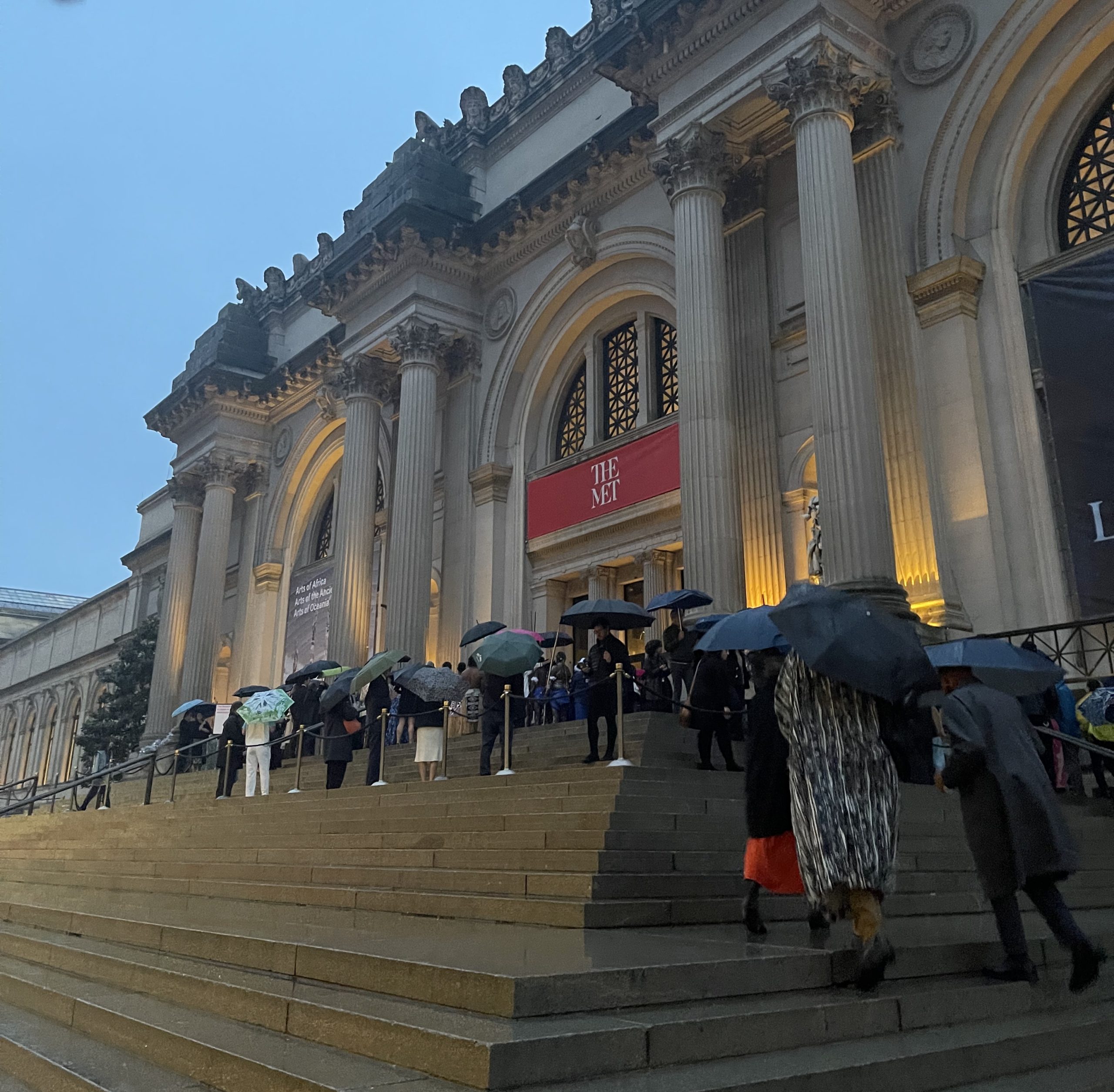In May 2025, Aotearoa New Zealand curators Zoe Black (Ngāpuhi, Ngāti Hine, Pākehā), Deputy Director of Objectspace, and Israel Randall (Tainui, Ngāti Kahungunu, Cook Islands), Curator Māori at City Gallery Wellington, visited New York City as part of the collaborative delegation programme between the Indigenous Curatorial Collective (ICCA) and the Pātaka Foundation, with support from Creative New Zealand.
The delegation programme centred on the reopening of the Oceania wing at the Metropolitan Museum, curated by previous ICCA Board Member Maia Nuku.
The five-day programme also included visits to the Hudson River Museum, FORGE Project and the Whitney – meeting with curators and facilitators at each institution.
Hudson River Museum
The programme began with Hudson River Museum, meeting with curators Laura Vookles Shilpi Chandra and Saralinda Lichtblau and the Director of the Museum, Masha Turchinsky. Hudson River Museum is located in the county of Westchester, one hour from NYC. Our visit focused on contemporary art exhibitions, specifically Smoke in Our Hair: Native Memory and Unsettled Time, curated by independent curator Sháńdíín Brown (Diné).
Smoke in Our Hair included works by 22 Native American, Alaska Native, First Nations and Métis artists. The exhibition text states: “Using the scented smoke of burning wood as a metaphor, Zepeda reminds us that Native memory is both fluid and indelible. The exhibition is organised in three main sections – wood, fire, and smoke – and each gallery space references and reveals different elements of cycles.” Works included conceptual installation, sculpture, painting and photography and was a stunning collection of perspectives on Indigenous art and thinking.
Stand-out works included:
Nicholas Galanin’s White Flag, 2022, a polar bear skin displayed as a flag, staunching signalling the authority of the peoples collected in the space.
Kǫʼ – Fire, 2024, an intricate woven wool cloak by shepherd, weaver and educator Nikyle Begay.
Eric-Paul Riege’s Hólǫ́ ‘s Rattles, the Yáhzí 1z [3-4] + [jaatłohYe’iitsoh], 2023, a pair of lush oversized earrings, described as ‘jewellery for the gods’.
Conversations with the staff at the museum disclosed Smoke in Our Hair was the first Indigenous led exhibition hosted at the institution and the team were thrilled with the critical response the exhibition had garnered.
The museum also included a historic house, planetarium, science and collection exhibitions. We noted that the pre-contact Indigenous history wasn’t prevalent in the museum’s story and would have been a valuable addition in the context of the exhibition.
FORGE Project
Our second day was spent at FORGE Project with Candice Hopkins (Carcross/Tagish First Nation), Executive Director & Chief Curator, Sarah Biscarra Dilley (yaktitʸutitʸu yaktiłhini [Northern Chumash]), Director of Indigenous Programs & Relationality, and Amelia Russo, Collections & Exhibitions Director.
FORGE Project is situated on the unceded and ancestral homelands of the Moh-He-Con-Nuck, the Peoples of the Waters that Are Never Still and the presence of this connection to the traditional owners deeply informs the organisation’s activity.
We travelled to Hudson, around two hours from NYC, and were greeted onto the six-acre estate consisting of two buildings designed by Ai Weiwei, in collaboration with HHF architects, an outdoor kitchen, and pool. Sarah has also been in charge of regenerating the land through restorative planting, introducing species that would have been present pre-contact.
FORGE centres restoration in all that it does – including a consistent and purposeful relationship with the Moh-He-Con-Nuck and ensuring the space is wholly considered as a time for artists to be present and focused on meaningful engagement with the land and space for the betterment of practice.
It was inspiring to reflect on FORGE’s governance models and how they are creating new methods of facilitating true Indigenous-led ways of working.
Candice, Sarah and Amelia generously shared the different facets of the organisation and provided a glimpse into what Indigenous-led, well-funded and committed intentions can achieve. It was hugely inspirational and could provide an amazing model for other similar opportunities to be created in Aotearoa.
Whitney Museum of American Art
We also spent time at the Whitney, sharing space with curators Laura Phipps and Jennie Goldstein along with Megan Heuer, director of Public Programmes. Laura, Jennie and Megan shared critically and meaningfully about the realities of working at a large institution with many stakeholders and competing outcomes. The Whitney is an institution with many intentions, aspirations and incentives and we discussed the ways in which they are beginning to form relationships with Indigenous knowledge holders and artists. They spoke about land acknowledgement being a visible step towards the institution understanding this relationship and described the Indigenous steering committee that is in place.
In between formal visits, we also viewed exhibitions at MoMA, Cooper Hewitt, the Guggenheim and DIA Beacon, among smaller shows at dealer galleries.
The Met
The reopening of the Rockefeller Wing at the Metropolitan Museum of Art took place over several days. We attended the dawn ceremony dedicated to the Oceania Wing and celebration, at the end of the week’s celebrations. The wing includes displays of Africa, Ancient Americas and Oceania, and the museum came alive with representatives from the five continents.
A large group of attendees from Te Moana nui a Kiwa who had travelled to tautoko the taonga and Dr Maia Nuku, Oceania Curator at The Met, ensured the dawn ceremony reflected the cultural traditions of Oceania nations. It was emotional to see new commissions from contemporary artists shown alongside taonga and experience the dawn light welcoming visitors for the first time into the wing.
Together we discussed how it was always simultaneously conflicting, heartbreaking and exciting seeing taonga amidst the hustle of an international city and this experience was no different. We hope we can tease out the multitude of thoughts around the complexity of artefacts in collections in further conversation with other curators.
This delegation offered a full and multifaceted view of the city’s arts ecosystem and a starting point to consider ways in which our Aotearoa context can help the Indigenous presence at institutions.
From these experiences, we are working on a series of interviews with other arts workers who were present during the week. We hope this exercise will help process some of the considerations discussed during the week and our role now and in the future as Indigenous curators and arts workers.
—-
We are grateful for ICCA, Creative New Zealand and Pātaka Foundation for the support enabling this delegation.
We offer a mihi to Maia Nuku for gathering the rōpū of visitors together. We appreciate her ongoing presence, leadership and expertise.
Zoe Black and Israel Randall
Supported by Creative NZ.

